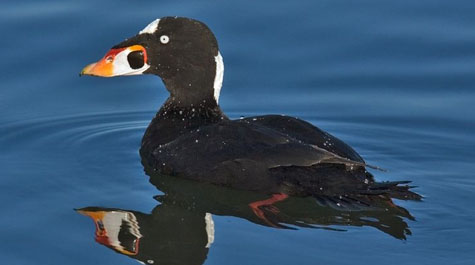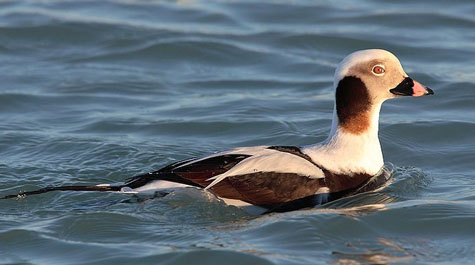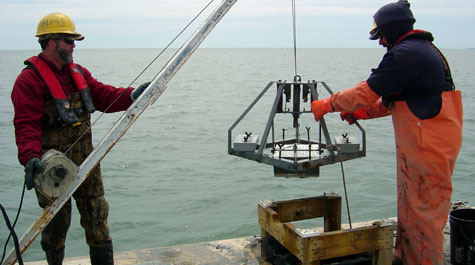Sea Duck Ecology
Investigating the wintering ecology of surf scoters and long-tailed ducks
North American populations of breeding surf scoters and long-tailed ducks appear to be decreasing. Along the Atlantic coast, wintering populations of surf scoters are suspected to be decreasing, while the status of wintering populations of long-tailed ducks remains unknown. These trends have led conservation organizations to assign a "high" relative conservation priority to both species.
To the best of our knowledge there are no published data on sea duck winter-habitat use in the higher salinity portion of lower Chesapeake Bay or in adjacent coastal bays along the Atlantic margin of the Delmarva (Delaware, Maryland, Virginia) peninsula. Within this region we have observed surf scoters and long-tailed ducks in shallow-water environments in both the southeastern portion of Chesapeake Bay and the coastal bays, yet little is known about their habitat use or feeding habits in these areas. Importantly, these 2 adjacent areas, which are separated by as little as 20 kilometers, differ in several key environmental components.
In this study we documented the wintering ecology for both surf scoters and long-tailed ducks in these adjacent regions during the winter of 2008-2009. Specific objectives were to
- compare the distribution, fine-scale habitat characteristics, and diet of surf scoters and long-tailed ducks in two discrete mid-Atlantic environs;
- qualitatively compare these results to previous studies in the fresher mesohaline portion of Chesapeake Bay; and
- investigate the proximity of winter foraging habitat to oyster reefs, seagrass beds, and emergent shorelines for both species.




